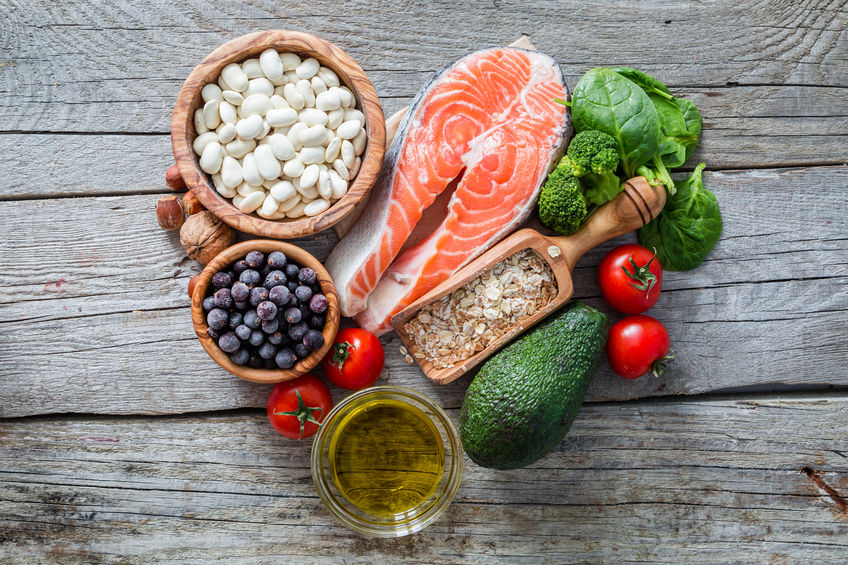3 Foods That Lower Heart Disease Risk

When it comes to heart disease, the statistics can be scary. After all, heart disease is the number one cause of death in America for both men and women. But one of the important things about heart disease is that it is, in large part, preventable. Some factors can’t be controlled, like age and genetic predisposition. But some of the major risk factors for heart disease, including hypertension and high cholesterol, can be reduced or eliminated through healthy choices, and those healthy choices start with your food.
Fatty Fish
It may sound counterintuitive to eat something “fatty” for improved heart health. But the fats in fish are different from trans and saturated fats. Plus, they contain 2 valuable chemicals that are very hard to find elsewhere: EPA and DHA Omega 3 fatty acids. Land animal meat like beef and pork don’t contain omega 3’s at all, and while ALA Omega 3’s can be found in many plants, it’s not the form our bodies need most, and it can’t be converted. So fish and fish oil are our best source!
While some Omega 6 fatty acids have been shown to promote inflammation, EPA and DHA omega 3’s are proven to reduce it. This can have a significant impact on a variety of conditions, including relieving joint pain from arthritis and lessening the risk of Alzheimer’s and dementia. For your heart, inflammation plays a role in the process for atherosclerosis, or the hardening of blood vessels. Atherosclerosis makes blood vessel walls weak, while plaque buildup clogs the vessels, and can break off to form dangerous clots. Reduced inflammation helps fight this process, protecting your heart and blood vessels.
Fruits
Fruits like oranges, lemons, apples, and strawberries are superfoods for heart health. They’re high in polyunsaturated fats, which are essential for body function. They also contain plenty of potassium, which helps regulate body fluids, and vitamin C, which evidence suggests can help reduce arterial stiffness and lower cholesterol by inhibiting the oxidation of LDL proteins that play a role in plaque buildup.
Another way that fruits help lower cholesterol, fight plaque buildup and protect your heart is via soluble fiber. In your gut, soluble fiber interferes with the reabsorption of bile. Since bile is a necessary body product made by the liver, this stimulates the liver to start making more. And what’s the main ingredient it needs? Bile salts, made from LDL cholesterol. Your liver pulls the cholesterol it needs from the bloodstream and converts it to bile, naturally lowering blood cholesterol levels!
Nuts
Nuts like almonds, peanuts, walnuts and other tree nuts are nutrient packed and thus helpful for your heart in a variety of ways. As I mentioned earlier, though ALA isn’t the same as EPA and DHA Omega 3’s, they’re still essential for our bodies, and nuts are a great source. Nuts are also a valuable source of fiber, which helps keep you full, aiding in weight loss that can with risk factors for heart disease like obesity and type II diabetes.
Plant sterols and stanols can also be found in nuts. These are chemicals that aid in lowering LDL cholesterol levels in the body. Because sterols and stanols are chemically similar to LDL proteins, they can bind to the same receptors, taking up spots so less LDL is absorbed in the intestines.
Finally, nuts have the one-two punch of vitamin E and L-arginine. L-arginine promotes artery flexibility, which fights atherosclerosis and plaque buildup. Vitamin E comes in and assists in reducing plaque formation. It also has clot-busting attributes and may help to thin blood naturally. Of course, if you take a blood thinning medication, be careful about your vitamin e consumption. Too much vitamin E may increase bleeding risks, and since some blood thinners have no antidote during a bleeding event, the result could be very dangerous.
Using foods to protect your heart is part of a healthy lifestyle that will benefit you in so many ways, giving you longer life, more energy, and the ability to fight off illness. Add in exercise to strengthen your muscles and cardiovascular system, and visit your doctor regularly to monitor for risk factors. Proactivity in health is absolutely key, and your body will thank you for it!
I want to thank Lindsey Pasieka for this guest Blog
Lindsey is a health investigator and writer who focuses on public health and safety issues. Through her work, she’s become an avid advocate for consumers, fighting for their right to safe products. In her spare time, Lindsey enjoys reading and spending time with her cat, Lava.

